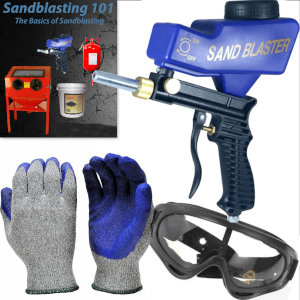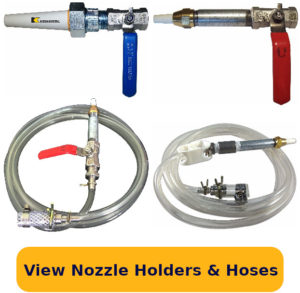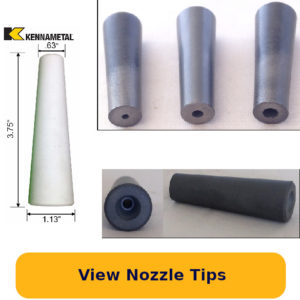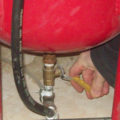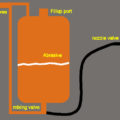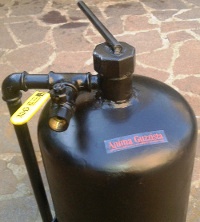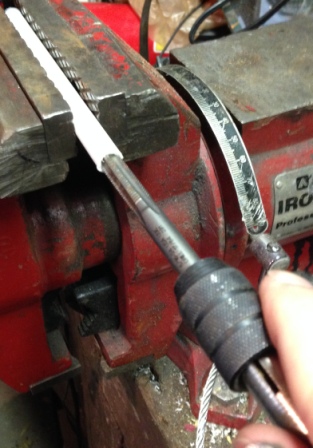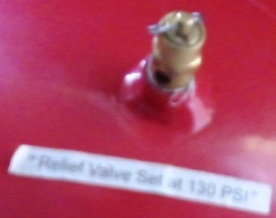
And that is the relief valve. The relief valve is a safety valve which is a typical sandblaster part built into the top of the pressure pot container area. Its basic function is to prevent the tank from filling up with a too high of an air pressure. If the pressure is too high, it could possibly damage seals, cause the hoses to explode, or cause harm to yourself. If the welds aren’t very strong and the pressure is very high, it can even pop them off, so make sure the welds are thick and strong.
You may not need one of these on the pressure tank when using regular garage sized air compressors, but it may be a good idea for safety. Most non-industrial grade air compressors don’t put out high pressures greater than 150 psi so it shouldn’t be too big of a deal. In fact, the air compressor’s regulator can be adjusted so that the pressure going into the sandblaster isn’t too high. I included a picture above of a relief valve on my other Harbor Freight sandblaster and it shows one rated at 130 PSI.
For the homemade blaster in my plans, I would probably recommend one for about 100-125 PSI to be on the safe side.
Safety should always be on your mind so the paragraph below explains briefly how you can put one on your pressure tank.
- To put a safety relief valve onto your sandblaster tank all you need to do is order the valve and get a tee.
- If using the the typical 3/8″ tee size, you will need to get a bushing to allow the valve’s 1/4″ threads to fit in the 3/8″ tee.
- Then connect the tee to the incoming air line before it goes into the pressure pot.
As an alternate route, you can drill a small hole on the top side of the sandblaser tank. Then clean the surrounding surface to bare metal and align a steel nut with the correct NPT threads to weld it in place.
Be sure you seal the relief valve threads with something like Teflon tape.
I hope this helps someone and please be sure to ask questions below. I will write up another post soon about the relief settings for propane tanks.

